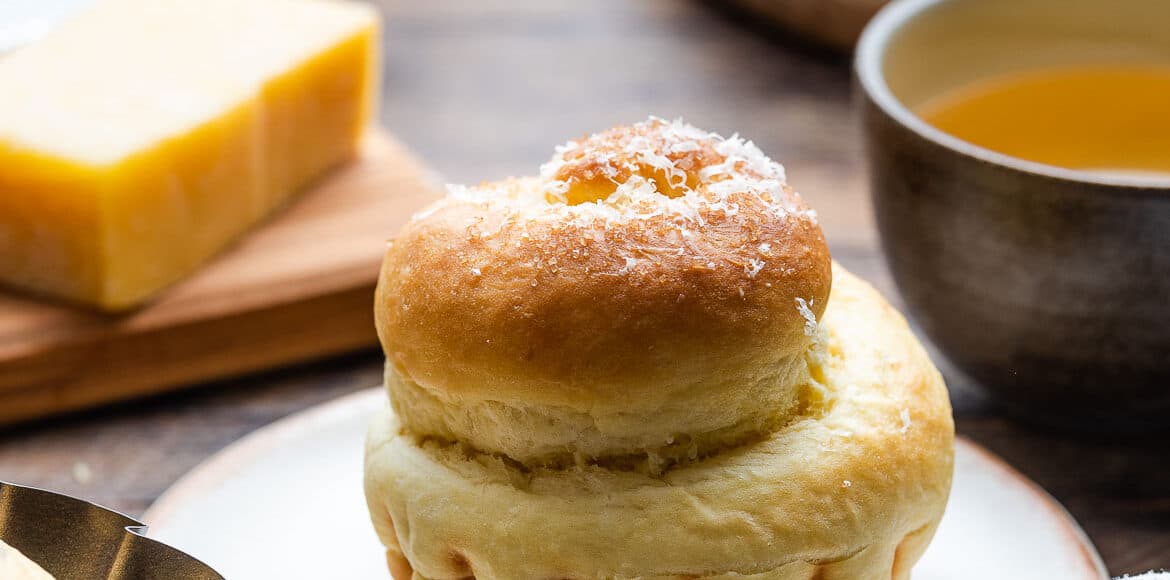
Ensaymada: Filipino Brioche Bread
Ensaymada is a Filipino brioche: tender, fluffy, lightly sweet and popular in Philippine bakeries. This Filipino bread originates from the Spanish ensaimada and is a classic merienda (snack) favorite. Make this easy brioche recipe at home!
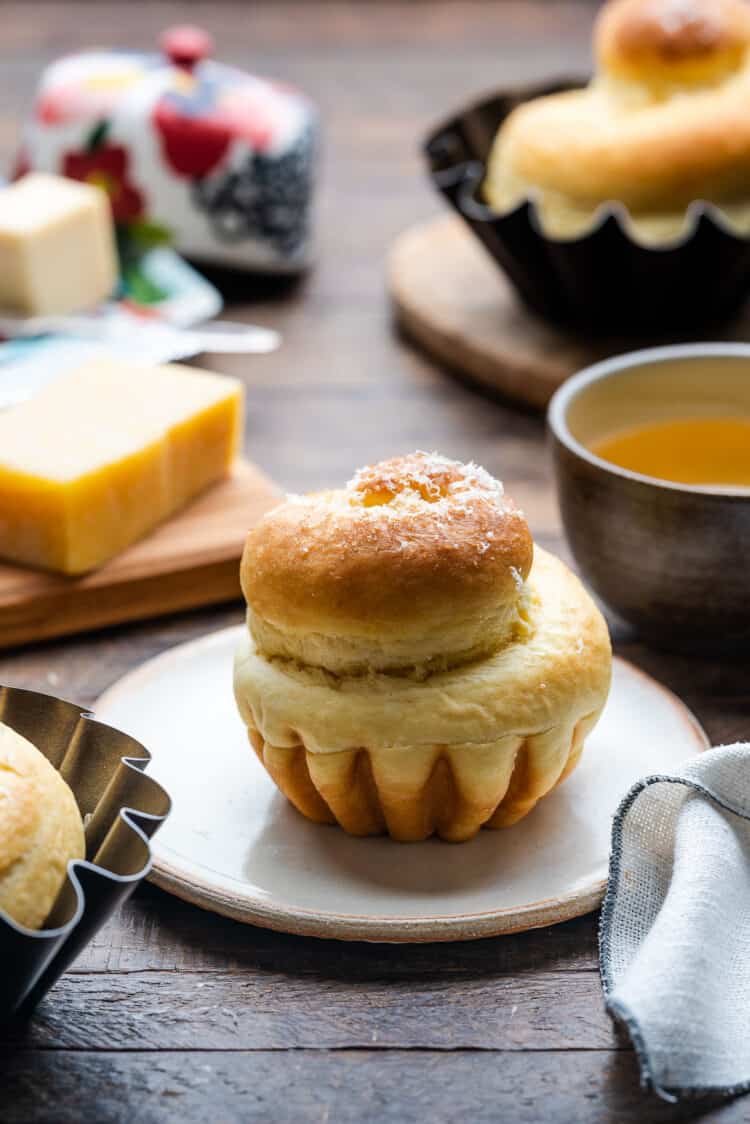
Ensaymada is a Filipino brioche: tender, fluffy, and lightly sweet! This Filipino bread originates from the Spanish ensaimada and is a classic merienda (snack) favorite. Enjoy this easy brioche recipe with a cup of coffee or tea!
AN ENSAYMADA RECIPE TO CELEBRATE TEN YEARS OF KITCHEN CONFIDANTE
Ten years ago today, I wrote my first post, breathing life into this website. When I pressed “publish,” I had no idea how long this would last, whether I had enough recipes to last me more than a year, or if I even had a goal.
All I knew was that I needed to preserve the recipes that meant the most to me — the ones I wanted my children to have, so that even if I’m not by their side…or on earth…they could make the family recipes, for a little taste of home.
It turns out I had lots of recipes to share, and that it lasted me well beyond a year. I fell in love with the process, with how it challenged me creatively and allowed me to preserve our stories and share them with you. At last count, I have published 1,223 posts, shared over 6,500 photographs, and some of our family favorites have become favorites of your own. The latter gives me the most joy.
On this tenth anniversary, I turn to the inspiration that began it all — my mom’s handwritten recipes, stuffed in my black binder, her precious scribble my last connection to those Saturday mornings when I would watch her bake. Some of her notes were written frantically, on whatever piece of paper she could find. And some were neatly and carefully (re)written on index cards, a project she undertook those last years she had with us when cancer came back again. She was doing her best to preserve them for us.
And so the archiving continues. As I celebrate this 10th year, I turned to one of her recipes for Ensaymada (she had several), one of my favorite Filipino breads that conjures up memories of bakeries on our visits to the Philippines, or the sugary, plump buns my aunt and cousins would bake and deliver every Christmas holiday. I’m not sure where my mom got her recipes from, but I dedicated this month to mastering and finetuning her classic ensaymada recipe.
WHAT IS ENSAYMADA?
Ensaymada is a brioche bread that has its origins from the Spanish Ensaïmada. While the Spanish Ensaïmada traditionally uses saïm, reduced pork lard, in the Philippines, the brioche is butter based. It can be a simple brioche, but the most popular version is filled with shredded Queso de Bolla (Edam cheese) and topped with butter and sprinkled with sugar. Delightfully sweet and savory, it’s perfect with a cup of dark roasted coffee. While it is a wonderful brioche all year round, in the Philippines it is especially popular around the Christmas holidays.
HOW TO MAKE ENSAYMADA: BRIOCHE RECIPE
This classic ensaymada recipe is surprisingly simple to make at home. It doesn’t take long to get the hang of it, and do not worry if you don’t have pretty brioche molds! You can bake them in jumbo muffin tins or simply on a baking sheet — either way, you’ll end up with tender brioche, buttery and if you wish, deliciously cheesy. I find that I like a lighter hand when it comes to the cheese and butter and sugar, but feel free to make it as decadent as you wish!
- Mix yeast, water, and 1 1/2 teaspoons sugar in a small bowl. Set aside until bubbly.
- Heat milk and melt butter. Stir in 1/2 cup sugar and let it cool.
- Sift the measured flour into a bowl.
- Add yeast mixture, milk mixture, and egg yolks to the flour in a bowl and mix until well blended and bound.
- Transfer dough to a greased bowl. Let rise for 1 hour in a warm spot or in a 100°F oven.
- Punch down the dough and divide it into 4 pieces, about 165g each. Lightly knead each portion and form into a ball.
- Roll out one ball of dough into an oblong shape about 1/4 inch thick.
- Sprinkle with grated cheese (optional). Starting from the long side, roll the dough into a long log.
- Pinch the seams, and roll the dough until it is about 15 inches in length, tapering the dough at one end.
- Starting at the thick end, roll the dough into a coil, and tuck the tapered end underneath. Place in greased brioche mold. Let it rise at room temperature for 30 minutes.
- Brush with melted butter and bake at 350°F for 15 minutes or until golden brown. Brush the brioche with softened butter, sprinkle with granulated sugar, and cheese (optional). Enjoy!
MORE FILIPINO DESSERT RECIPES TO TRY
Mamon: Filipino Sponge Cake
Cassava Cake
Ube Halaya (Filipino Purple Yam Jam)
Coconut Ube Rolls
Coconut Leche Flan
Pumpkin Leche Flan
Custard Cake
Ginataang Bilo-Bilo
Ginataang Mais: Filipino Coconut Rice Pudding with Corn
Taho: Filipino Silken Tofu with Sago Pearls and Syrup
Disclosure: There are affiliate links in this post. Please see my Privacy Policy & Disclosure page for details.
Classic Ensaymada (Filipino Brioche)
Ingredients
- 1 packet dry active yeast (2 1/4 teaspoons)
- 1/4 cup lukewarm warm water 100-110°F
- 1 1/2 teaspoons granulated sugar (6 grams)
- 1/2 cup skim milk
- 1/2 cup granulated sugar
- 1/4 cup melted unsalted butter
- 3 large egg yolks
- 2 1/2 cups all-purpose flour (350g) unsifted
- 1/2 cup grated Edam or cheddar cheese (optional)
- 2 tablespoons melted unsalted butter for brushing
- 2 tablespoons softened unsalted butter for topping
- 2 tablespoons granulated sugar for topping
Instructions
- Mix yeast, water, and 1 1/2 teaspoons sugar in a small bowl. Set aside until bubbly.
- Heat milk and melt butter. Stir in 1/2 cup sugar and let it cool.
- Sift the measured flour into a bowl.
- Add yeast mixture, milk mixture, and egg yolks to the flour in a bowl and mix until well blended and bound, then transfer to a greased bowl. Let rise for 1 hour. I like to proof my dough in a 100°F oven.
- Punch down the dough and divide it into 4 pieces, about 165g each. Lightly knead each portion and form into a ball. Keep the balls of dough lightly covered while you work with each individual piece.
- Roll out one ball of dough into an oblong shape about 1/4 inch thick. Sprinkle with grated cheese (optional). Starting from the long side, roll the dough into a long log, pinch the seams, and roll the dough until it is about 15 inches in length, tapering the dough at one end. Starting at the thick end, roll the dough into a coil, and tuck the tapered end underneath. Place in greased brioche mold. Lightly cover while you repeat for the remaining dough.
- Preheat the oven to 350°F. As the oven preheats, allow the dough to rise at room temperature for about 20-30 minutes.
- Brush with melted butter and bake at 350°F for 15 minutes or until golden brown (with an internal temperature of 185°F).
- Brush the brioche with softened butter, sprinkle with granulated sugar, and cheese (optional). Enjoy!
Video
Notes
Ensaymada Tips:
- Make ahead: The wonderful thing about baking bread is you can break up the process.
- If you wish to make the dough the night before, make the dough up to the first rise, punch down the dough and form it into balls. Lightly cover and refrigerate the dough until you are ready to bake. You may find the dough is elastic when you take it out of the fridge; just give it some time to warm up at room temperature and it will be easier to roll out.
- You can also form the coils, place them into molds, and refrigerate until you are ready to bake. In either case, you may find that the second rise will take longer, as you working with cold dough.
- Yield: This recipe makes 4 large ensaymada in 5.5 fluted brioche molds and can easily be doubled to serve more. The dough can also make smaller ensaymada to suit your molds, just keep an eye on baking time, and shorten as necessary.
- Don’t have brioche molds? Not to worry. You can also make these in jumbo muffin baking pan, or simply on a parchment-lined baking sheet.
- How to measure flour: Scoop unsifted flour into measuring cups and level, or even better, use a kitchen scale to measure by weight. You will sift the flour after measuring.
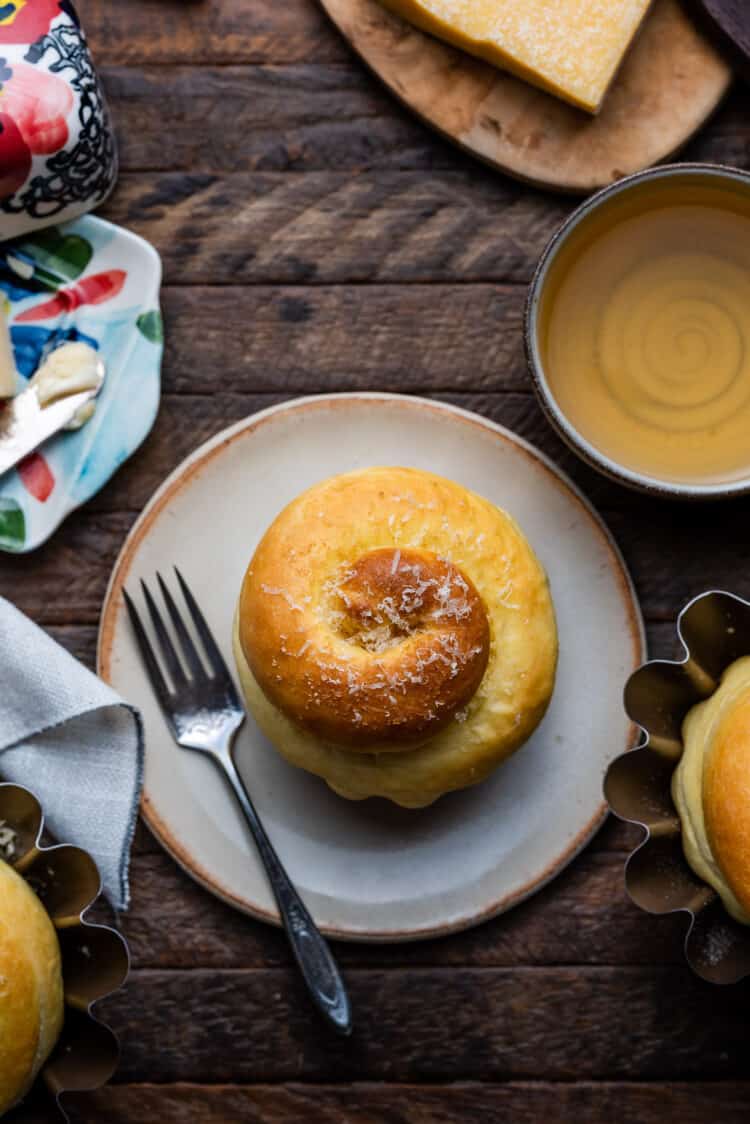
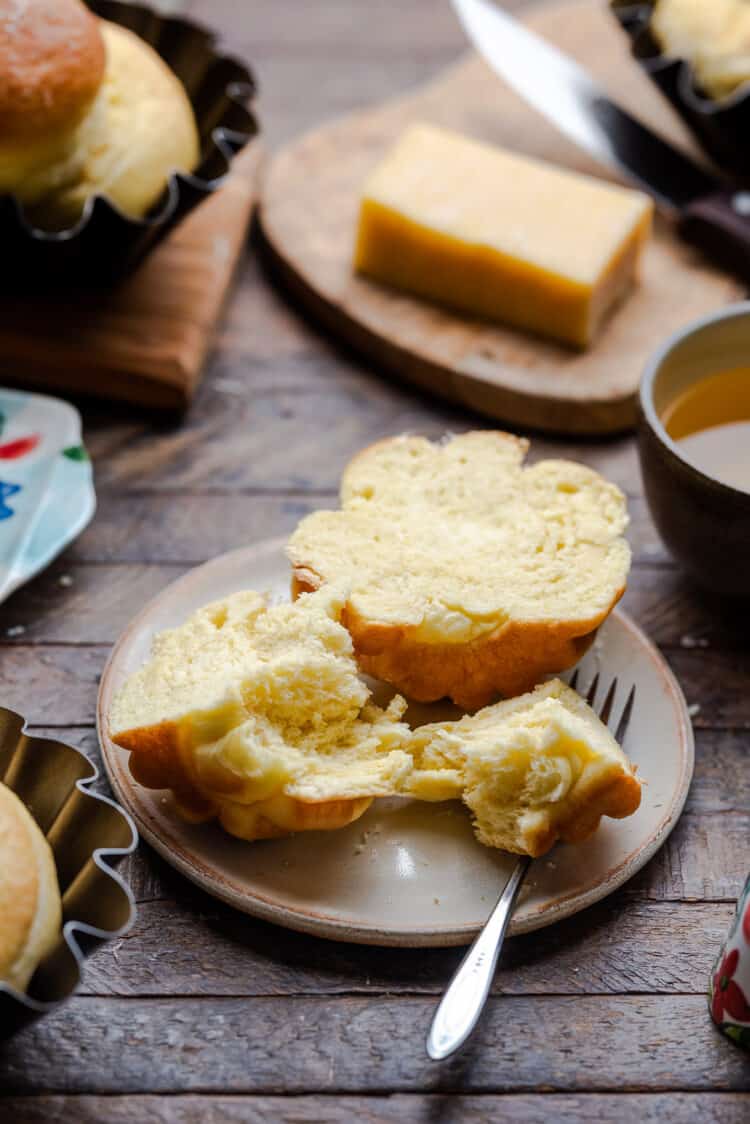
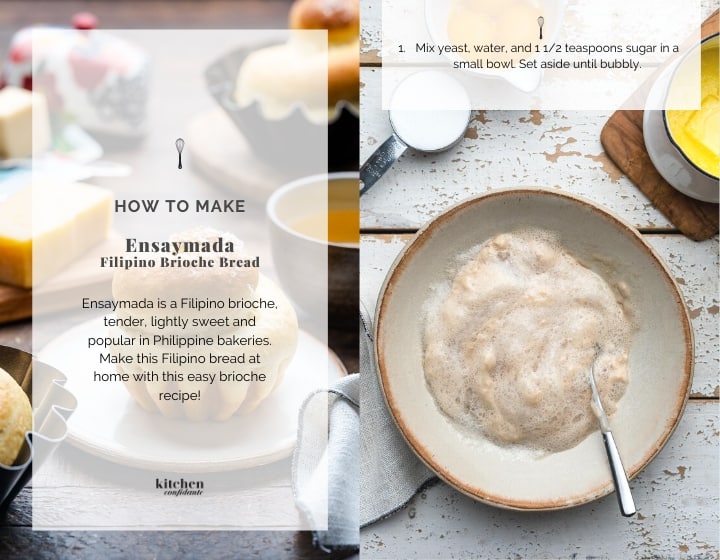
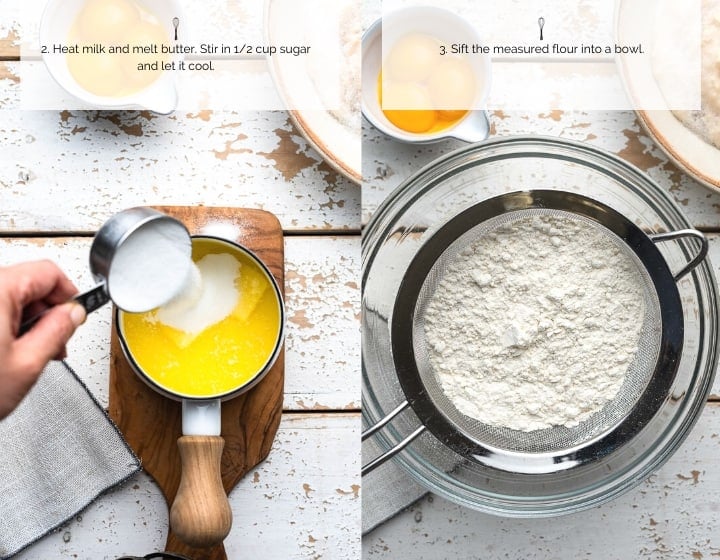
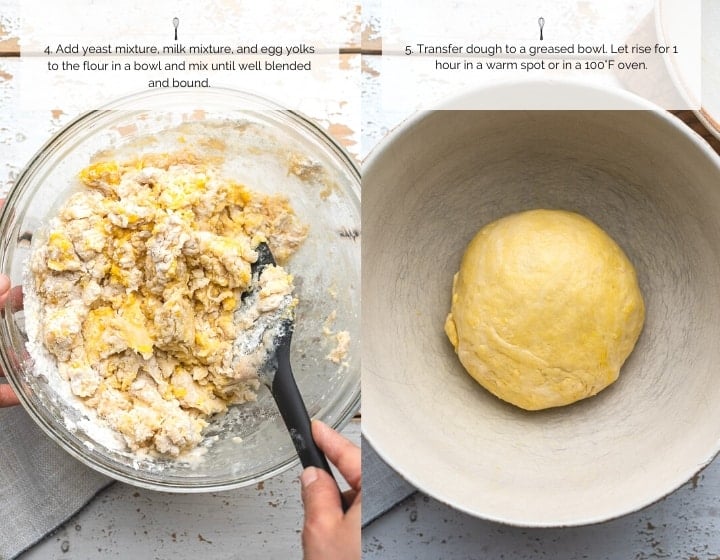
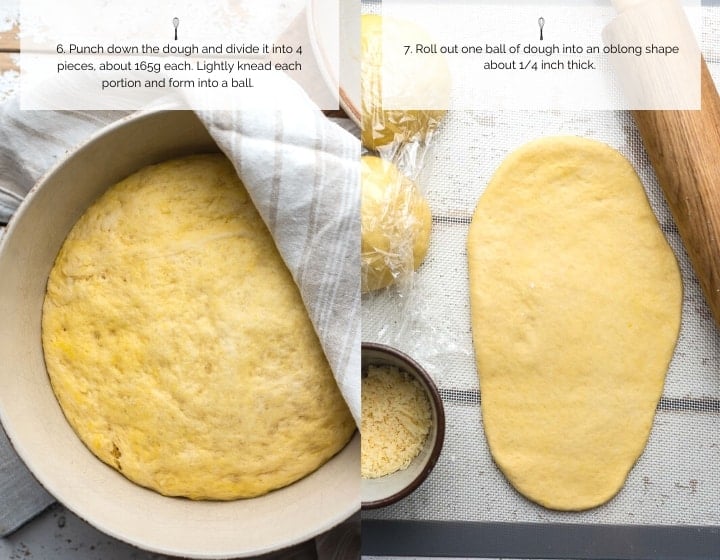
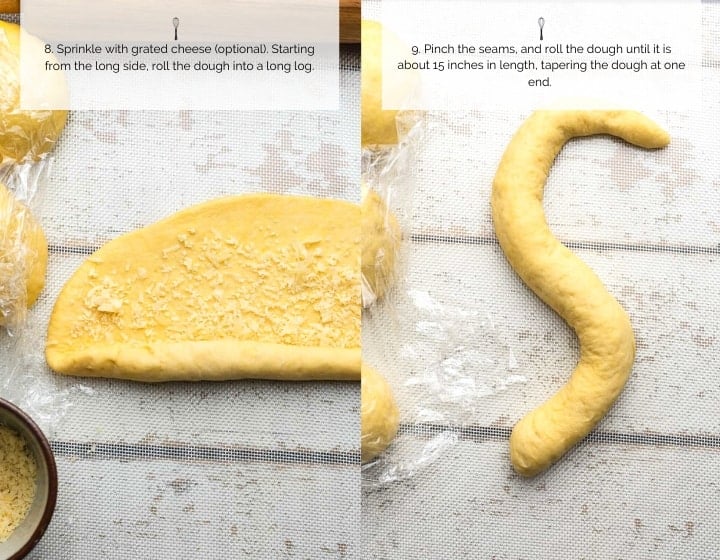
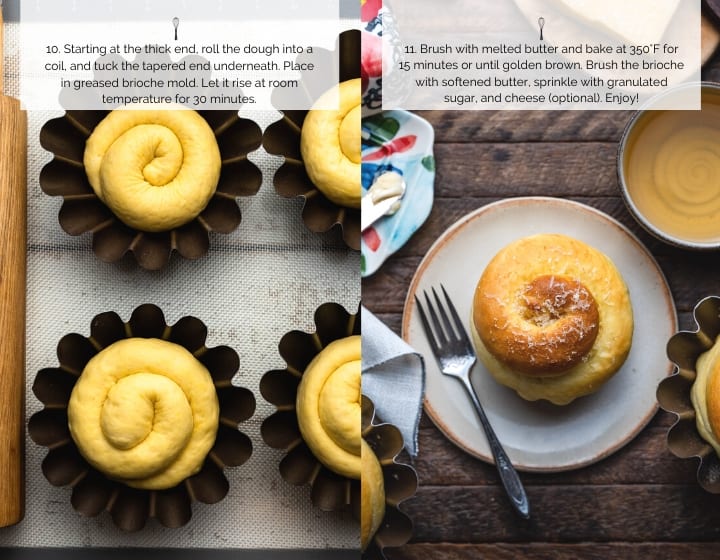
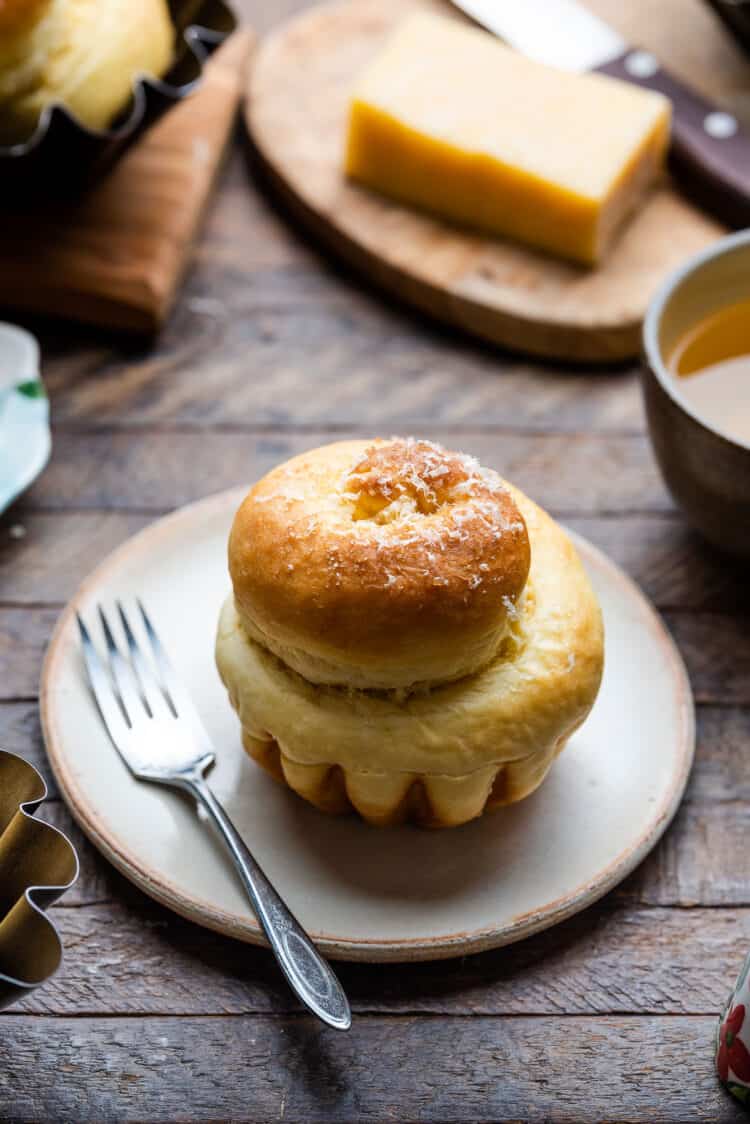
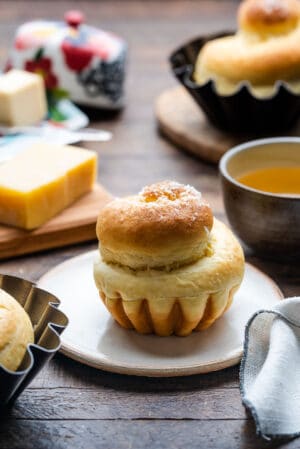

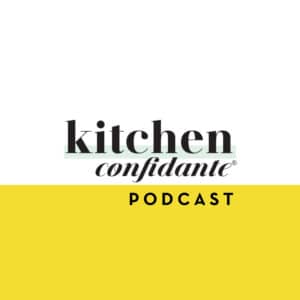
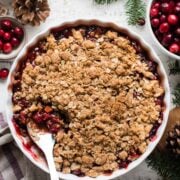
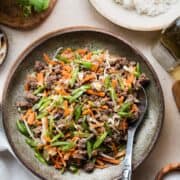
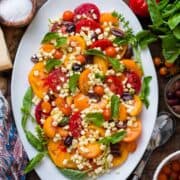
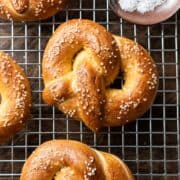

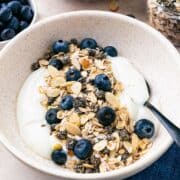

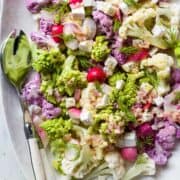

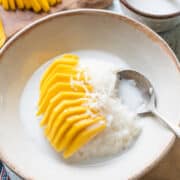
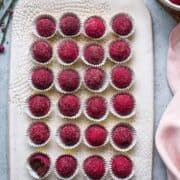


Is the dough supposed to be sticky? After baking for 15 min., why is it still doughy inside?
Hi, can I substitute active yeast with instant yeast?
I have not tested the recipe with instant yeast, but in general, you can definitely substitute active yeast with less instant yeast – in this case, I would try it with 1 2/3 teaspoons instant yeast. Also, since instant yeast does not require proofing, you can add it directly to the dry ingredients. I hope this helps!
Love this recipe!! I found and tried a different recipe the first time I wanted to make ensaymada, and it was terrible. I wanted to try again and this time found your recipe and it was great! Nice and fluffy. I was able to make 12 rolls (50 grams each), and placed them into a spring form pan to make the perfect 2-bite pull-apart rolls. I only wished I made two batches. You said that this can be easily doubled. If I double it, does that mean I double everything, including the yeast? (so instead of 2-1/4 tsp, it’ll be 4-1/2 tsp?) Can it be tripled? (if I ever have family come over, haha)
Hi Charina! I am SO glad that you found my recipe and loved it! That makes me so happy. Yes, you can double (and triple) the recipe — and that would mean doubling everything, including the yeast. To make it simple, when you print out the recipe, the recipe card has a little slider that allows you to increase the servings and it will calculate the ingredient quantities for you. I hope that helps – happy baking!!
This looks great but doesn’t really look like the traditional Filipino ensaymada. Thank you for sharing the recipe nonetheless. :)
Hi, SY, thanks — the recipe is a family recipe for ensaymada, so the dough is authentic, but I admit, I often prefer it without the extra butter/cream and cheese that I grew up eating, so I share it as a base for however you want to top it!
Can I use bread flour instead of APF. I’m new in bread making
Hi Ethel, for a brioche dough, I really recommend using all-purpose flour if you can. It will result in a lighter, fluffier bread. If you don’t have any, you can certainly use bread flour, just keep in mind that it will be more dense. I hope this helps!
Hi, I want to know how many mins for the kneading after you mix all ingredients..thanks
Hi Anne, this dough requires really minimal kneading — less than a minute when you mix all the ingredients together so that it forms a ball. And later (in step 5), after the first rise, you are just quickly dividing and forming into small balls, so just a few seconds! I hope this helps.
It’s my first time to make ensaymada I am so excited then I forgot to put the egg yolk , but then it taste nice after all.
I’m glad it still turned out well!
I am going to cry- my dough did not rise but I proofed they yeast….. what did I do wrong? It’s my first time using yeast. Did I not knead it enough before trying to let it rise? You said to mix the dough that it’s blended and bound which I did. Was I supposed to knead it first?
Hi Mariel – don’t cry! So, there could be several issues. Let’s try to troubleshoot.
1 – Is your yeast fresh? Since you proofed the yeast, I’m assuming yes, but always good to check.
2 – It’s possible to kill the yeast with hot liquid — did you use water around 100°F? Is it possible that when you heated up the milk and butter, it was not cool enough before adding it to the yeast and flour?
3 – How cool/warm is the location where you are letting the dough rise? If your house is cool, it can take longer for a dough to rise. I put my dough in a 100°F oven, or in a warm dryer with the door open, for example. If your house is chilly, that could be the culprit.
You asked about kneading it before rising — when you blend the ingredients together, you want to mix it enough so that it does bind into a ball. It really doesn’t take a lot of strong kneading at all, just a few turns to help it to form into a ball.
I hope this helps. I’m hoping it’s the room temperature that is the issue, in which case, give it more time in a warm spot. Good luck!
Omg you’re so sweet for answering so quickly- I desperately want to get this right (I’m sure I’m also taking my pandemic anxiety out).
I appreciate you so much! I placed the bowl next to a fireplace but not too hot- it’s starting to rise!
I totally understand! Glad that it’s starting to rise! Fingers crossed that the rest goes smoothly!!
Celebrating 10 years of KC with you Liren! So much you’ve shared, learned and contemplated as you’ve built this blog. I love how you have hand written recipes from you mom, cherished and loved. She would be so proud to see your work and her recipes through your eyes. Beautiful in image and word, Liren. It’s time to celebrate your milestone!
Every morning on my way to work, I stop by a bakery to get myself a brioche bread. I always thought I needed a sophisticated and regulated environment before I can make them.
Thanks for showing me how to make them for my family. Totally appreciated.
like the sweet savory combo with this bread, had never heard of Ensaymada before, so thank you for that and for the recipe
Congratulations on 10 years! I am a loyal follower but have not been brave enough to attempt some of the Filipino recipes you have offered. I married into a Filipino family, but my husband lost his mom about 10 years ago. She didn’t memorialize her fabulous recipes, and while the LA Filipino food scene is improving, it isn’t “Mom’s” cooking. I am so excited to take a shot at some of your family favorites and hopefully fill a hole in my family’s collective heart for true, authentic home cooking. I’ve only had ensaymada from the Filipino bakeries in the area, with the cheddar cheese and butter on top, but I am so intrigued to try your version! My husband is still in charge of the pancit for holidays (one recipe we DO have), but it would be great to add a few familiar tastes to our routine. My son is away at college in Baltimore, but can only find Filipino food when he visits family in New York and New Jersey. His favorite is sinigang. Thank you for sharing these precious recipes and fingers crossed that I will attempt some of them soon!
Hi Liren! I was searching for ensaymada recipes and found you site. I’m excited to try this recipe. I have a question. In your ingredients, it says 1/4 cup sugar, then in the instruction, it says 1/2 cup. I’m just wondering which one? Though I was also planning to use the measurement of sugar in grams that you included. Thanks for answering my question!
Hi Kristen, I must apologize for the late reply, somehow your comment snuck past me and I just saw it now! I do feel terribly. Thank you for your question and for catching that discrepancy. It is, indeed, 1/2 cup of sugar, and I have corrected the recipe. I hope that helps!
Dear Virginia, I want to say a very sincere (but belated) thank you for your comment! I just love how you are trying to recreate those family favorites at home for your husband and family — I have to say, your son has good taste! Singing is my brother’s favorite, and I always think of him when I make it. I hope you and yours are all doing well, and that these recipes are able to bring a taste of home cooking to your family!